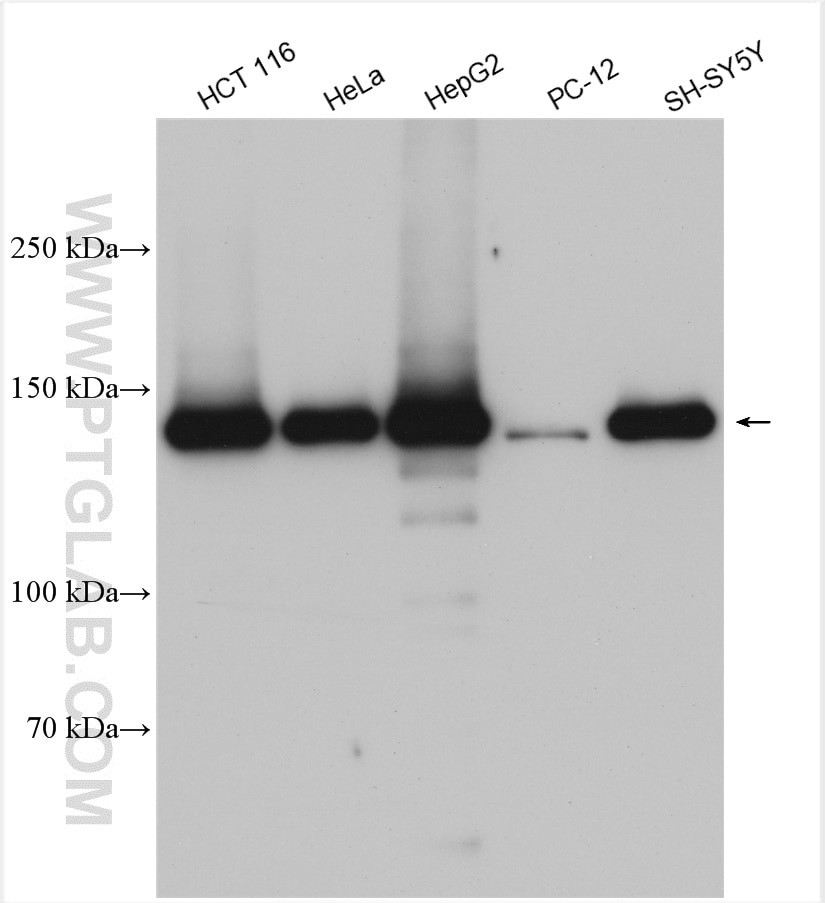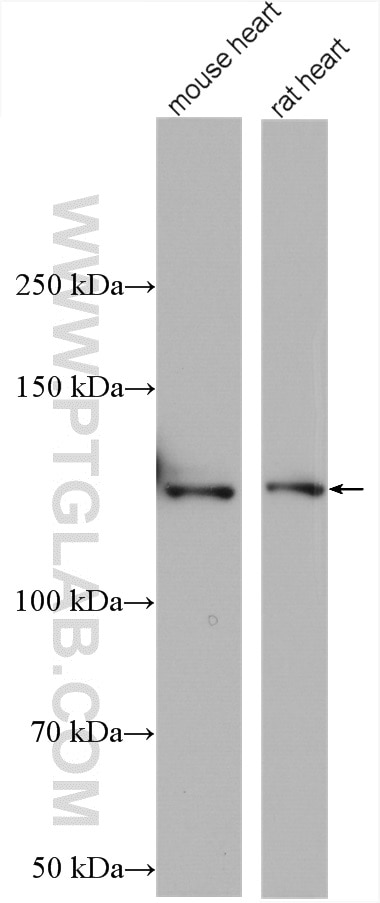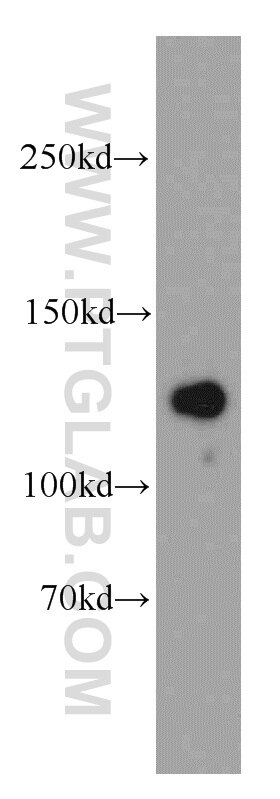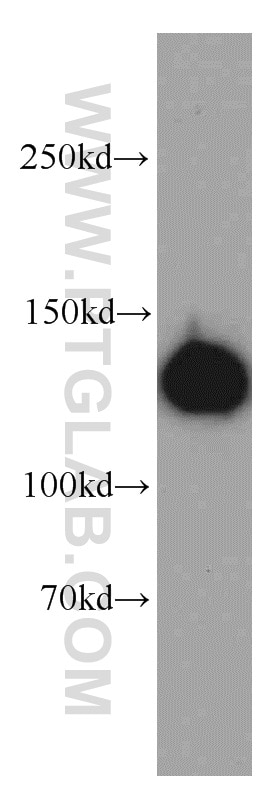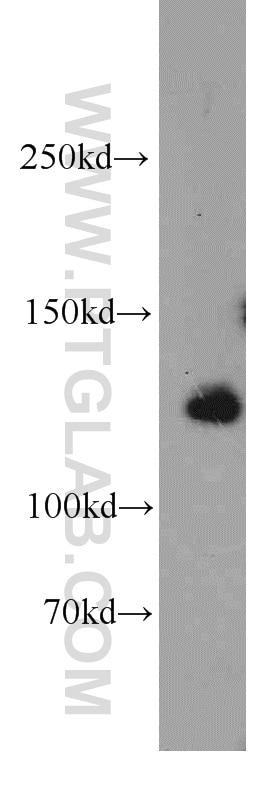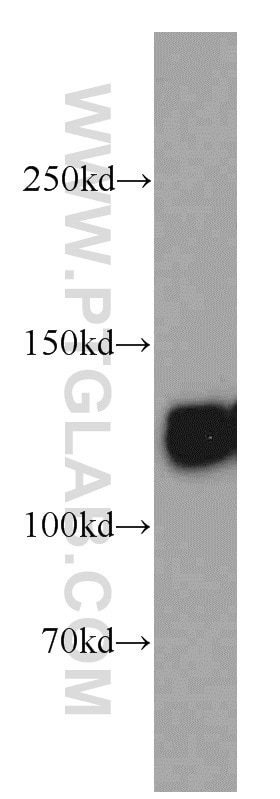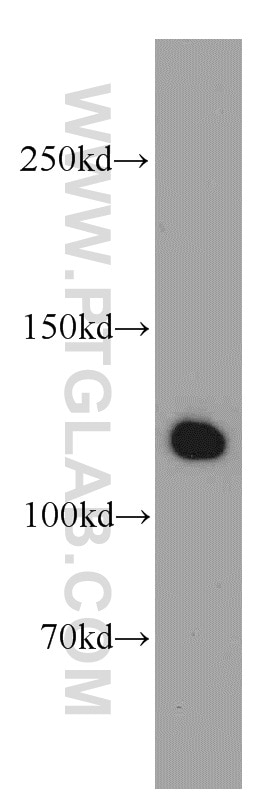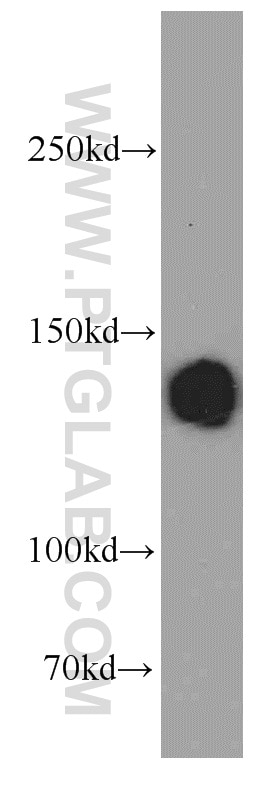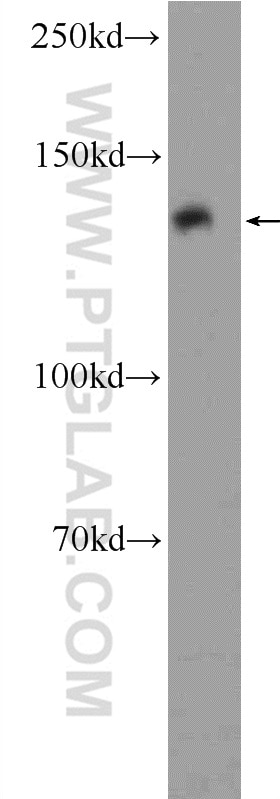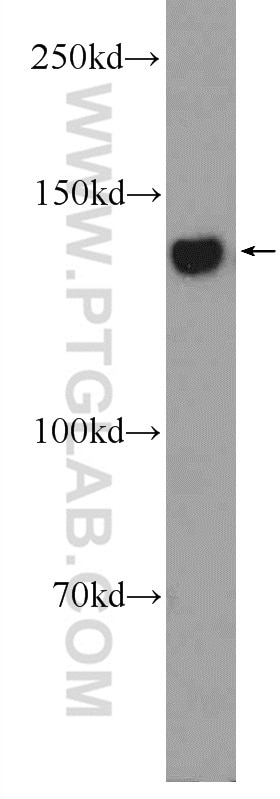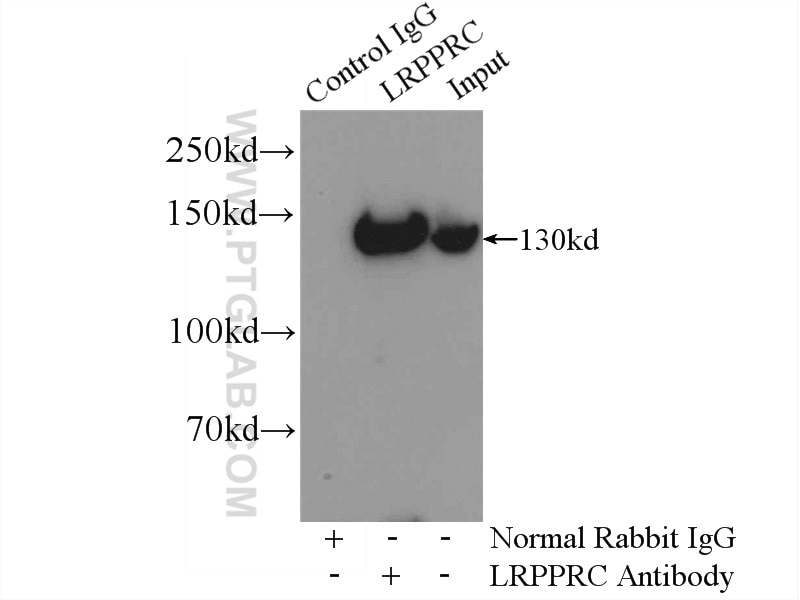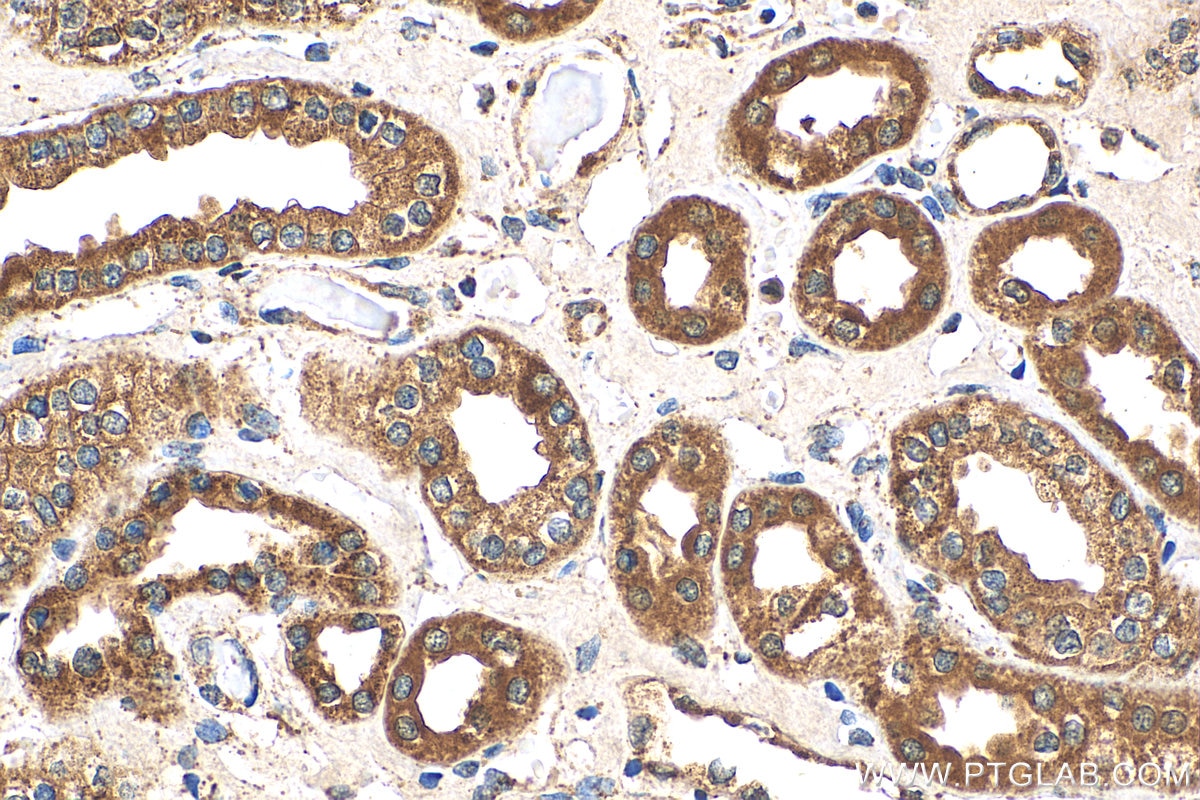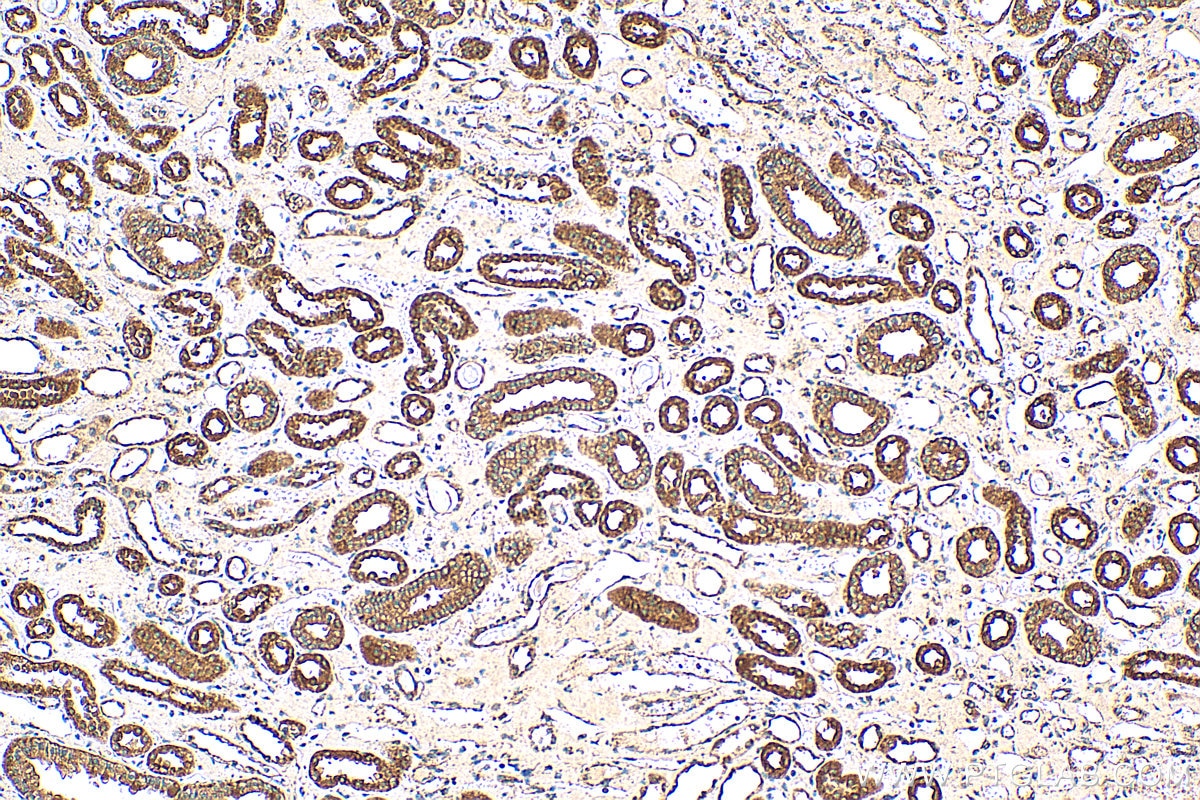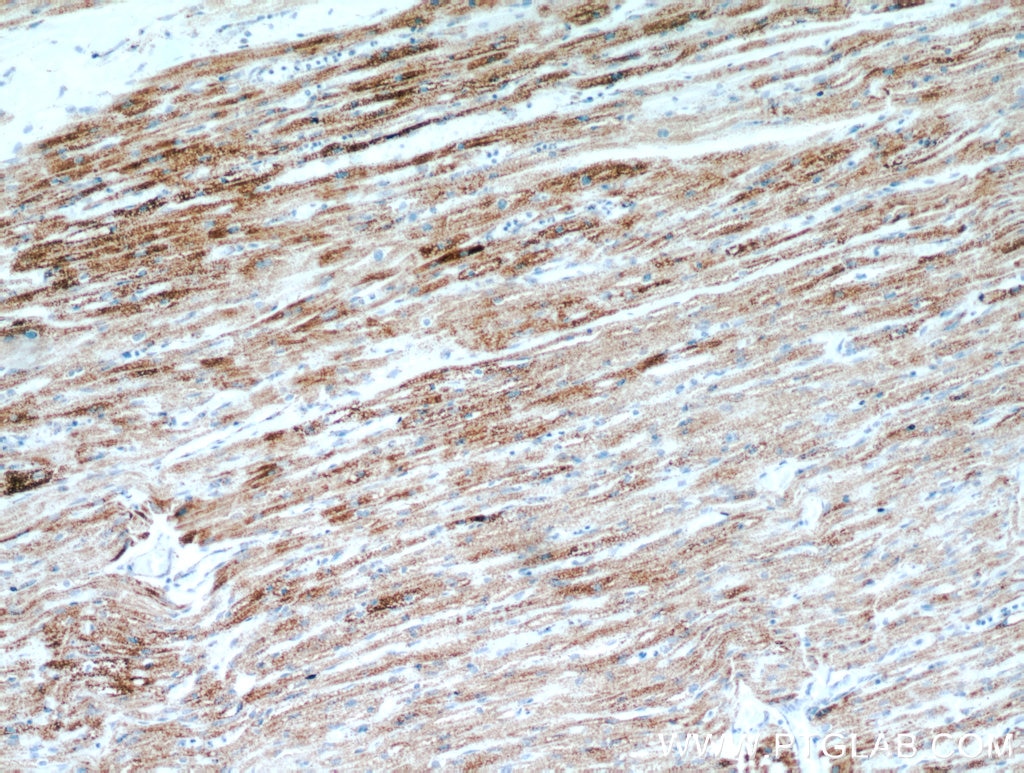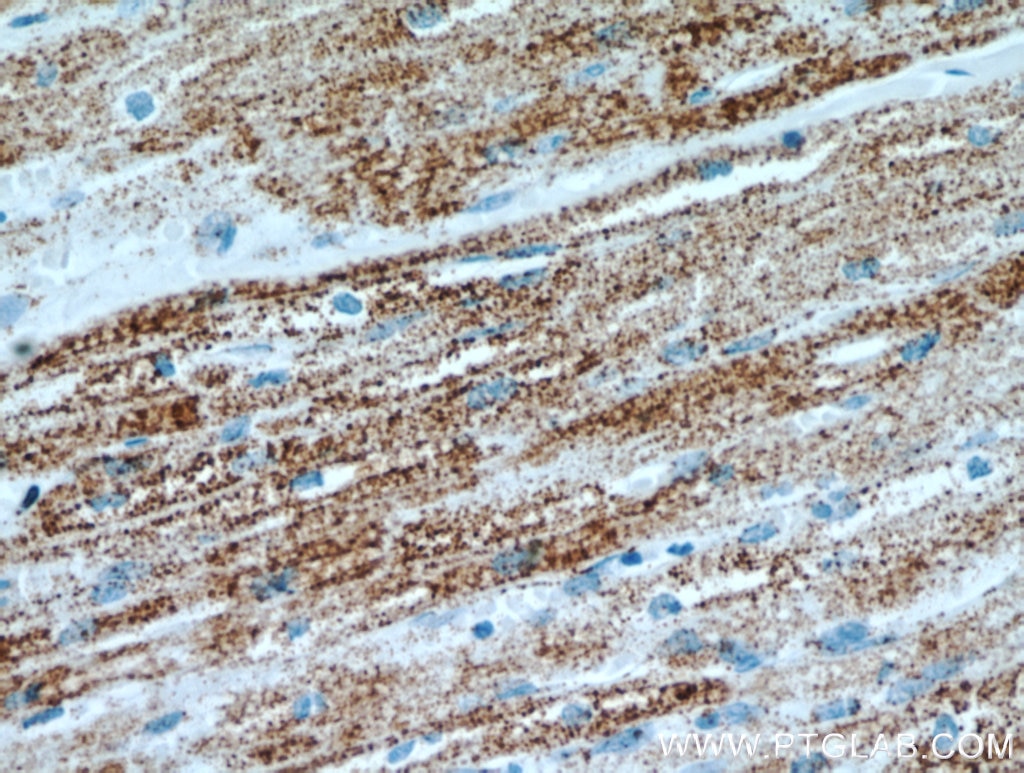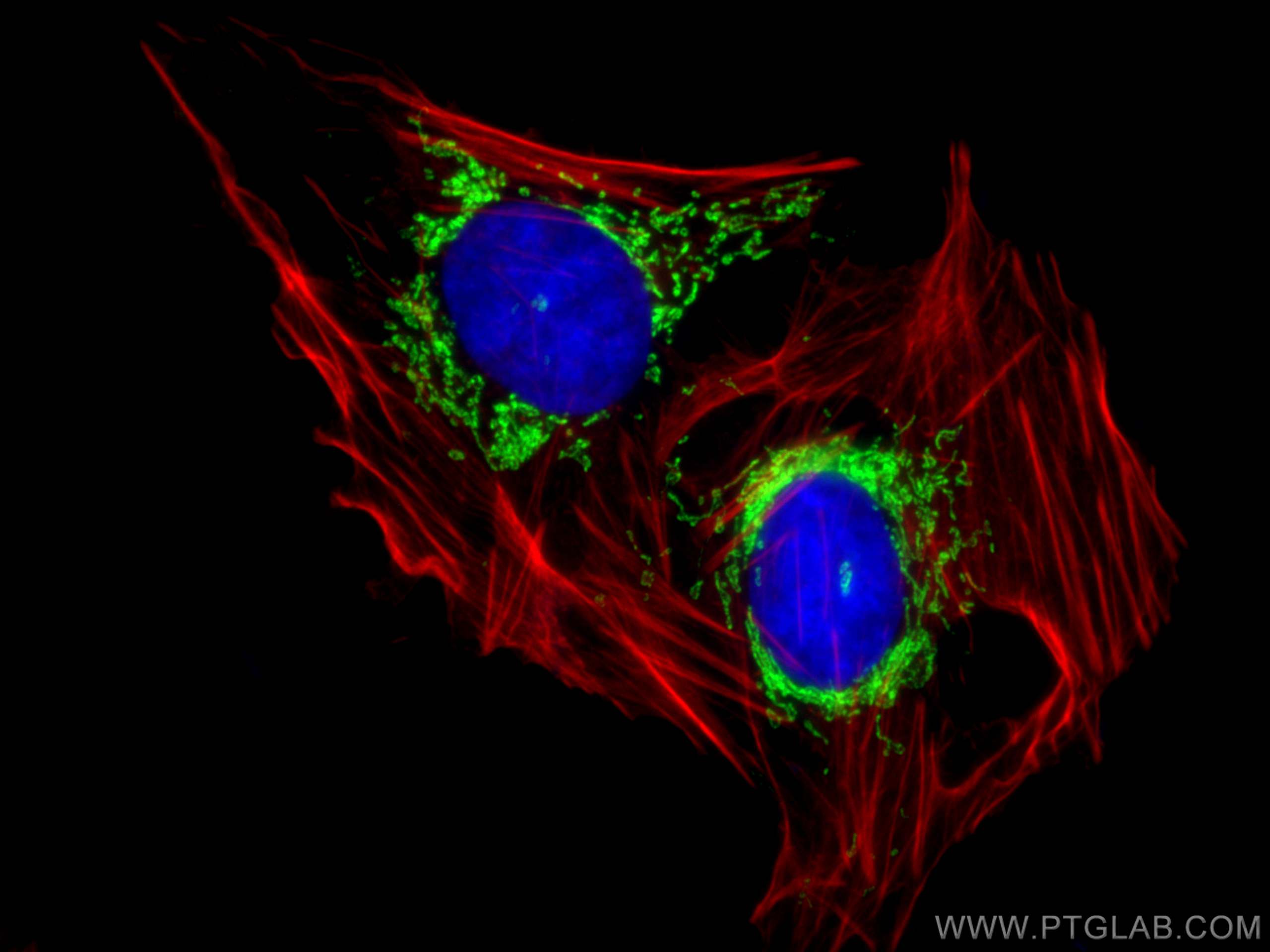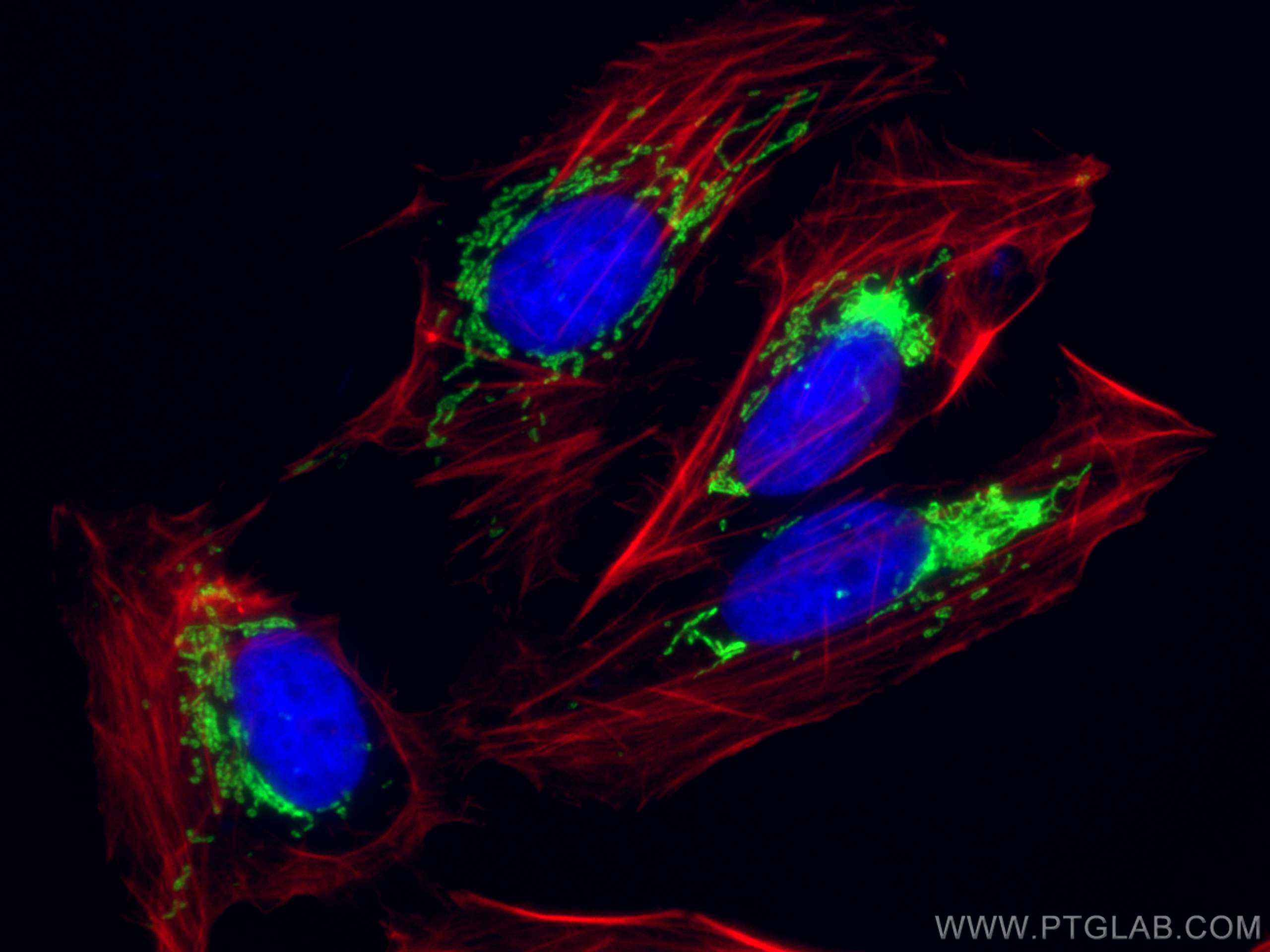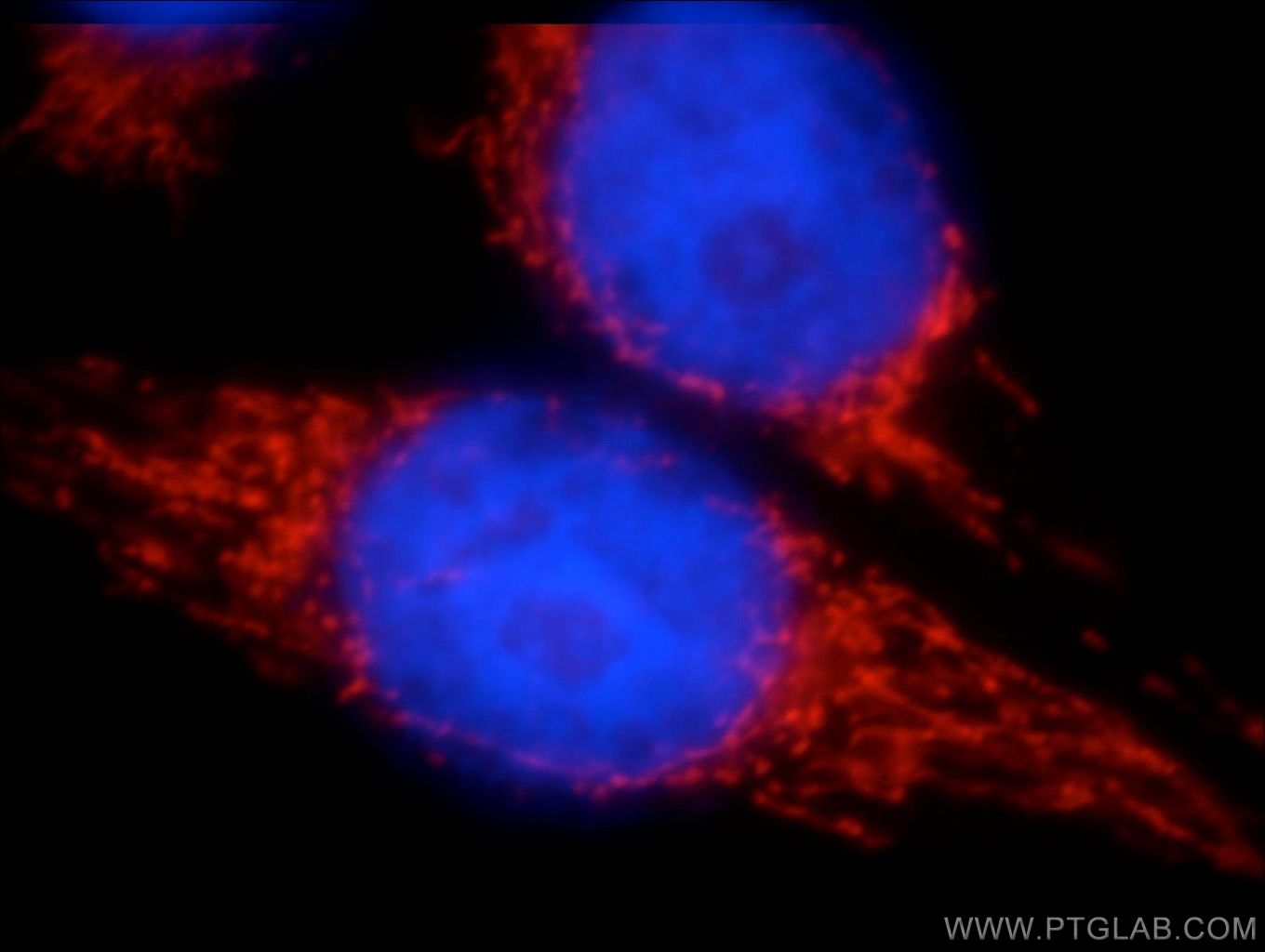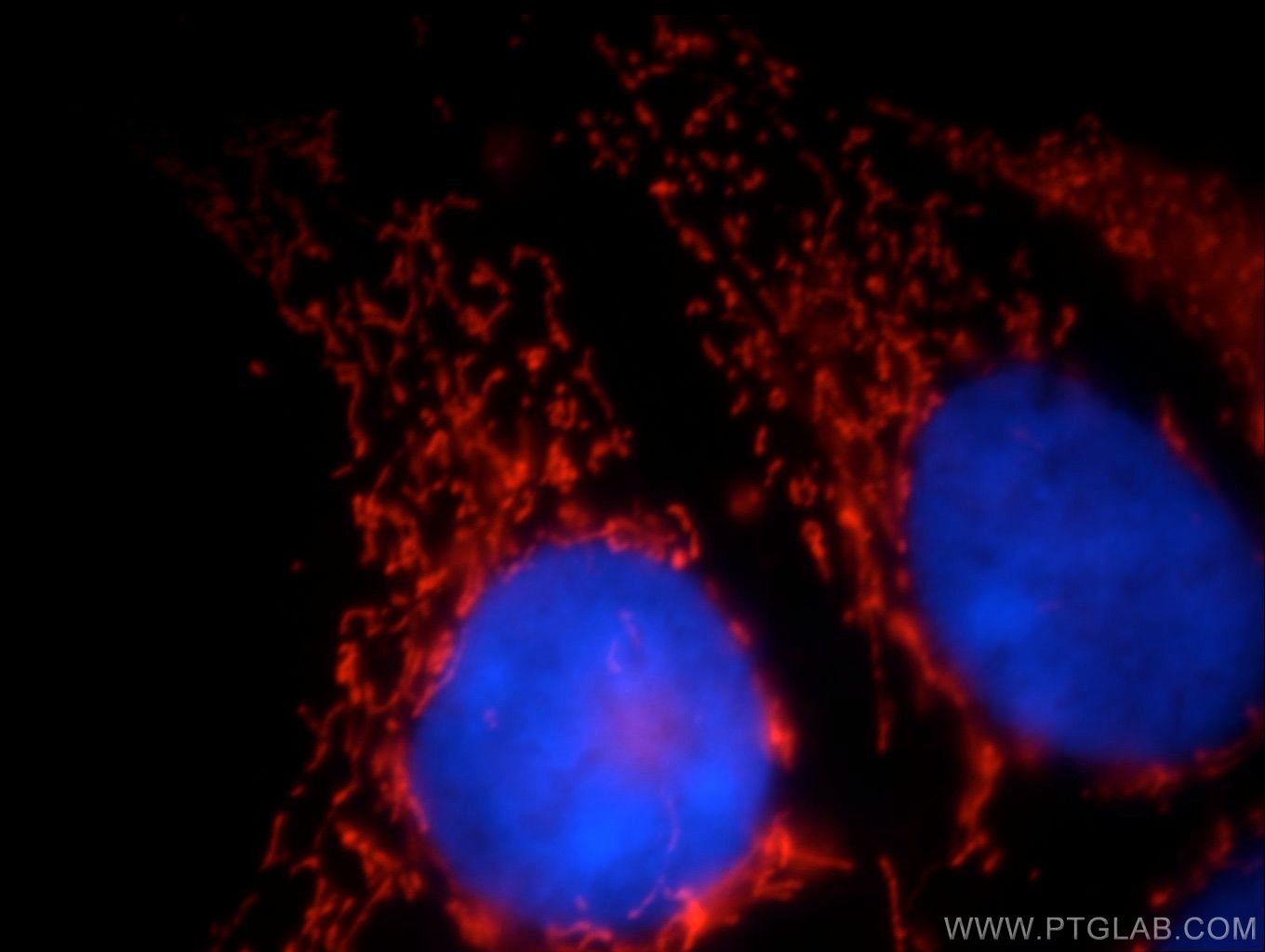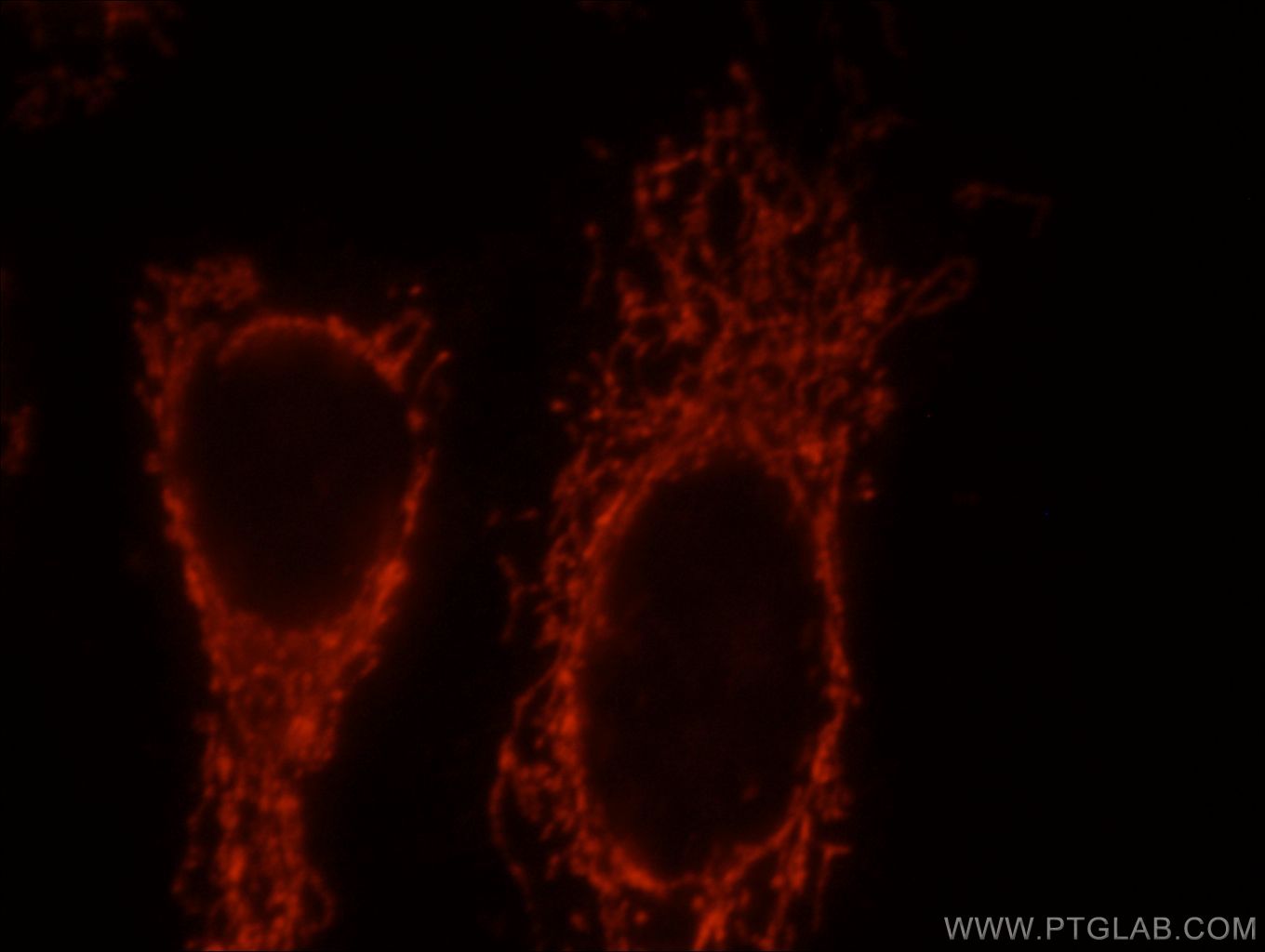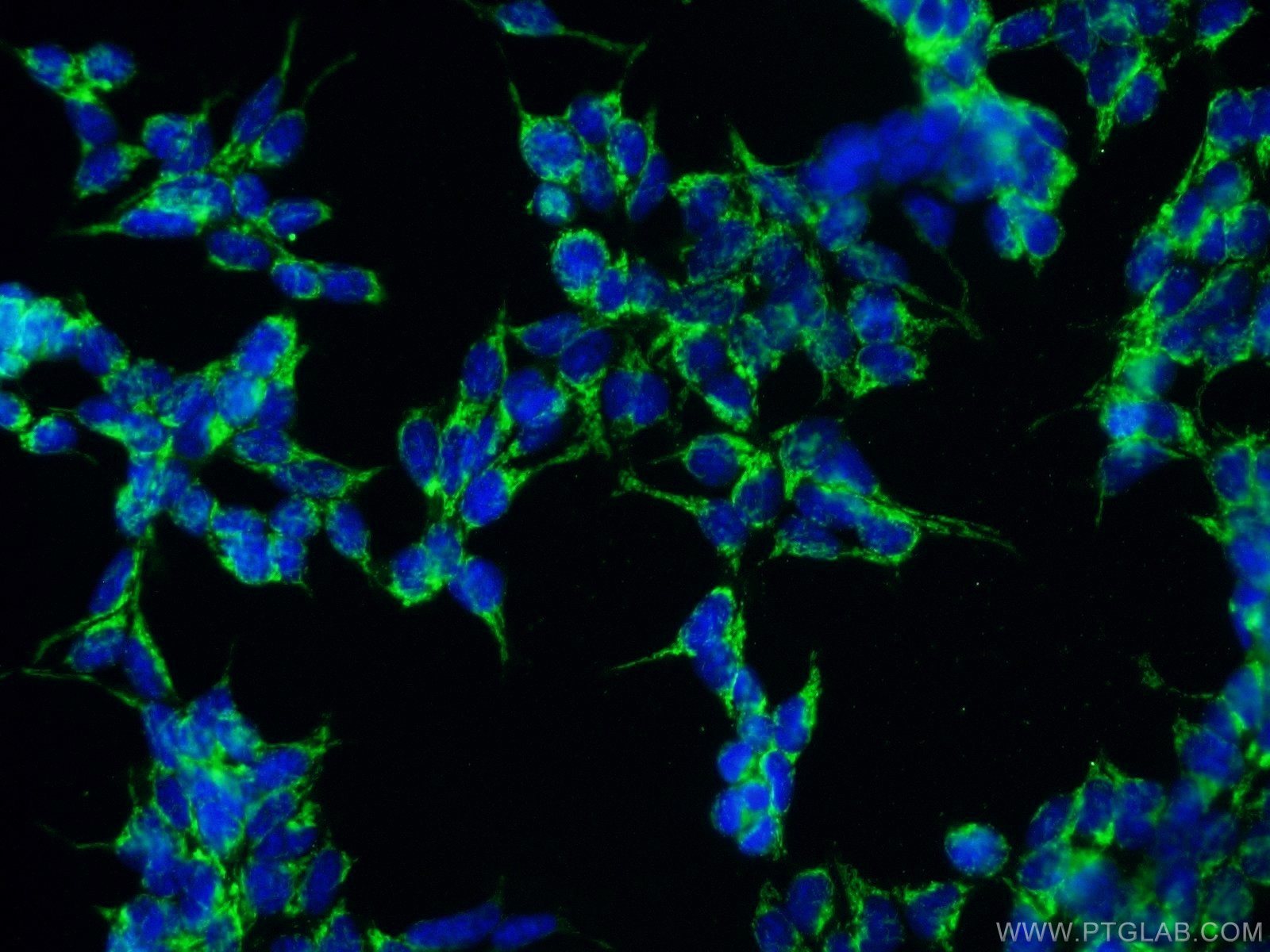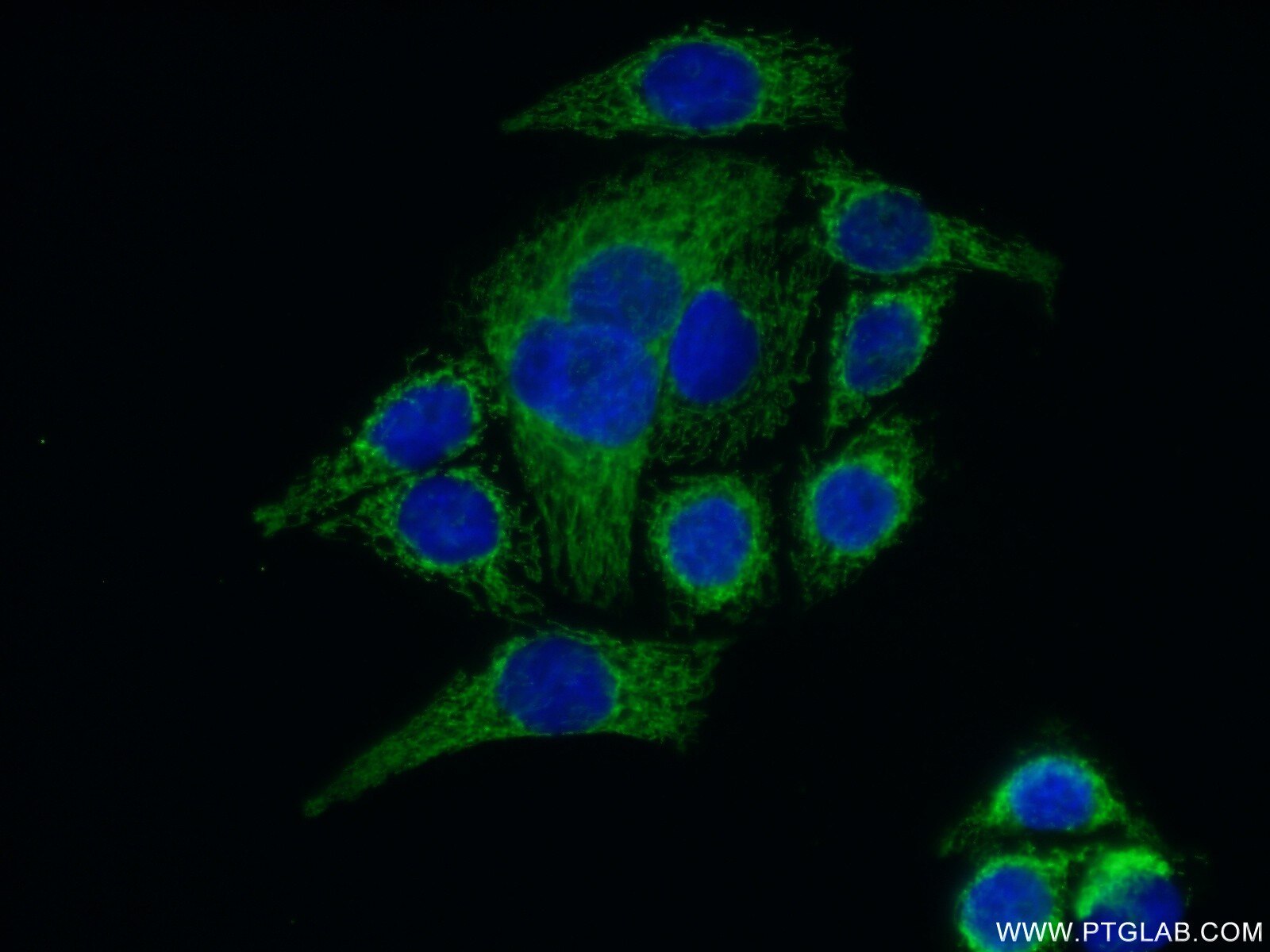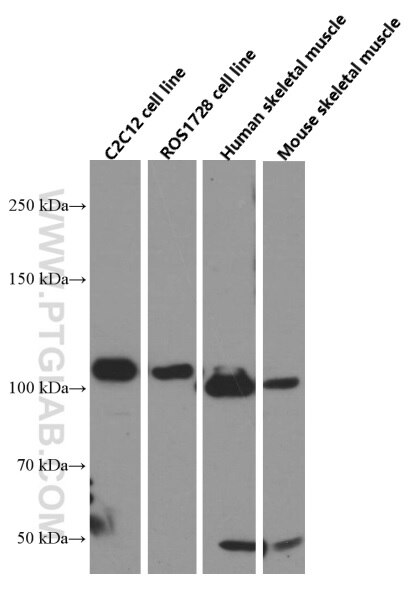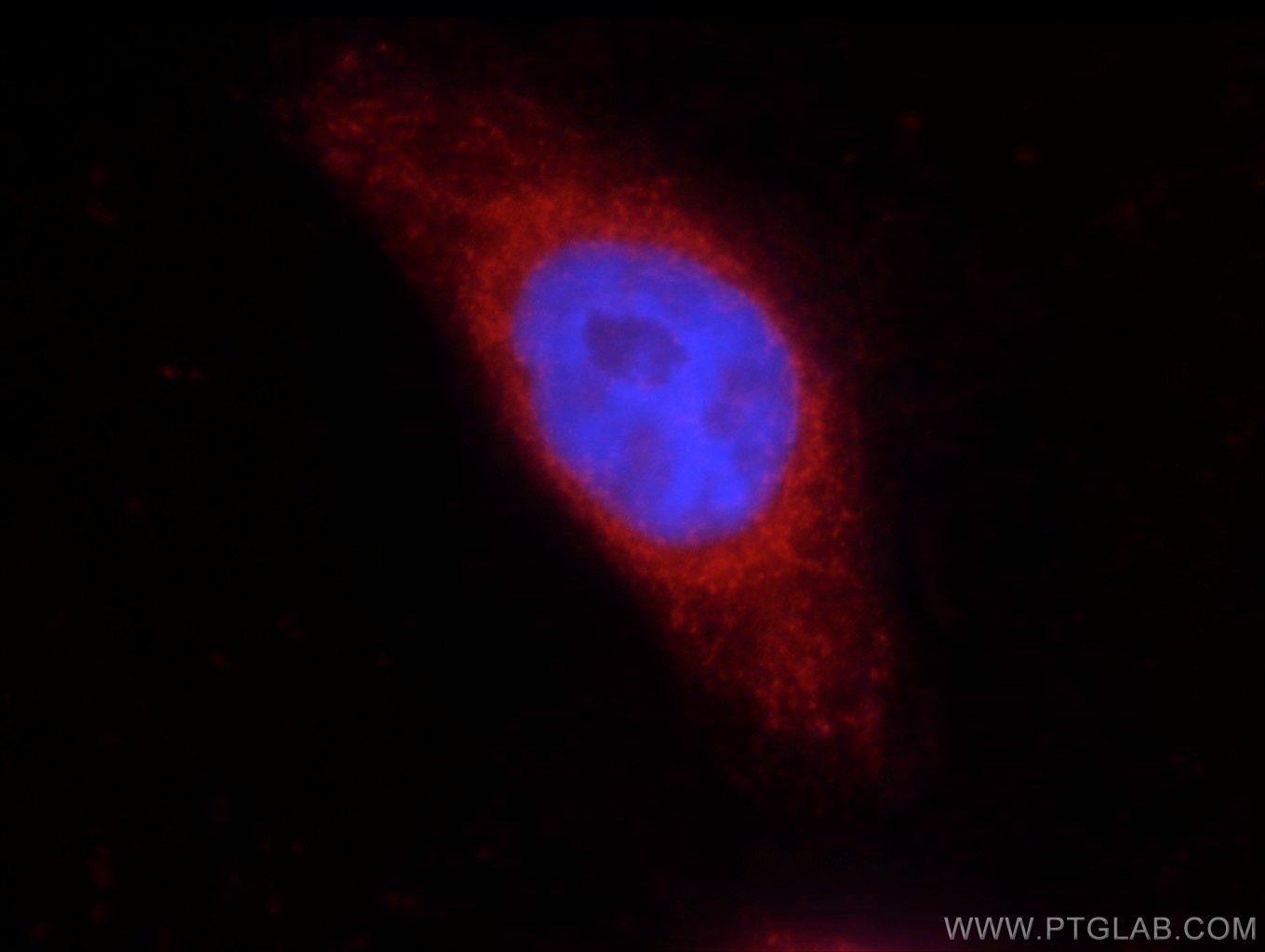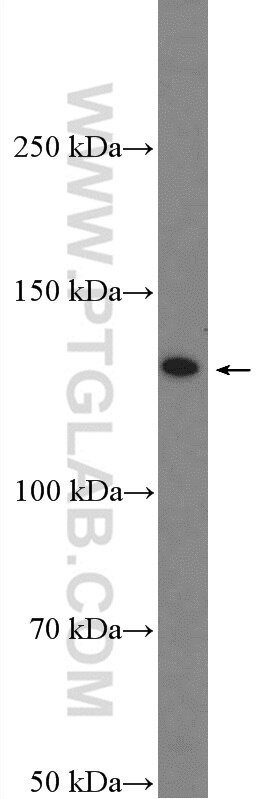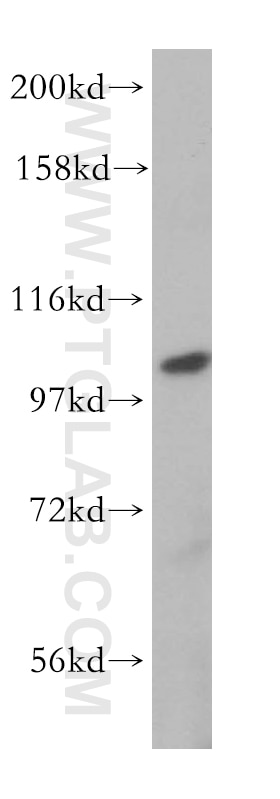- Phare
- Validé par KD/KO
Anticorps Polyclonal de lapin anti-LRPPRC
LRPPRC Polyclonal Antibody for WB, IP, IF, IHC, ELISA
Hôte / Isotype
Lapin / IgG
Réactivité testée
Humain, rat, souris
Applications
WB, IHC, IF/ICC, IP, CoIP, RIP, ELISA
Conjugaison
Non conjugué
N° de cat : 21175-1-AP
Synonymes
Galerie de données de validation
Applications testées
| Résultats positifs en WB | cellules HCT 116, cellules HeLa, cellules HepG2, cellules PC-12, cellules SH-SY5Y, tissu cardiaque de rat, tissu cardiaque de souris, tissu de muscle squelettique de souris, tissu hépatique de rat, tissu hépatique de souris, tissu rénal de rat, tissu rénal de souris |
| Résultats positifs en IP | cellules HeLa |
| Résultats positifs en IHC | tissu rénal humain, tissu cardiaque humain il est suggéré de démasquer l'antigène avec un tampon de TE buffer pH 9.0; (*) À défaut, 'le démasquage de l'antigène peut être 'effectué avec un tampon citrate pH 6,0. |
| Résultats positifs en IF/ICC | cellules U2OS, cellules HEK-293, cellules HeLa, cellules HepG2 |
Dilution recommandée
| Application | Dilution |
|---|---|
| Western Blot (WB) | WB : 1:5000-1:50000 |
| Immunoprécipitation (IP) | IP : 0.5-4.0 ug for 1.0-3.0 mg of total protein lysate |
| Immunohistochimie (IHC) | IHC : 1:50-1:500 |
| Immunofluorescence (IF)/ICC | IF/ICC : 1:200-1:800 |
| It is recommended that this reagent should be titrated in each testing system to obtain optimal results. | |
| Sample-dependent, check data in validation data gallery | |
Informations sur le produit
21175-1-AP cible LRPPRC dans les applications de WB, IHC, IF/ICC, IP, CoIP, RIP, ELISA et montre une réactivité avec des échantillons Humain, rat, souris
| Réactivité | Humain, rat, souris |
| Réactivité citée | rat, Humain, souris |
| Hôte / Isotype | Lapin / IgG |
| Clonalité | Polyclonal |
| Type | Anticorps |
| Immunogène | LRPPRC Protéine recombinante Ag15452 |
| Nom complet | leucine-rich PPR-motif containing |
| Masse moléculaire calculée | 1394 aa, 158 kDa |
| Poids moléculaire observé | 130 kDa |
| Numéro d’acquisition GenBank | BC050311 |
| Symbole du gène | LRPPRC |
| Identification du gène (NCBI) | 10128 |
| Conjugaison | Non conjugué |
| Forme | Liquide |
| Méthode de purification | Purification par affinité contre l'antigène |
| Tampon de stockage | PBS avec azoture de sodium à 0,02 % et glycérol à 50 % pH 7,3 |
| Conditions de stockage | Stocker à -20°C. Stable pendant un an après l'expédition. L'aliquotage n'est pas nécessaire pour le stockage à -20oC Les 20ul contiennent 0,1% de BSA. |
Informations générales
LRPPRC (also called LRP130 or GP130) is a 130-kDa RNA-binding protein of the pentatricopeptide repeat family. LRPPRC localizes primarily to the mitochondria where it binds to poly(A) mRNA. It plays a role in the translation or stability of mitochondrially encoded cytochrome c oxidase (COX) subunits. LRPPRC has also been shown to regulate nuclear gene transcription and to bind specific RNA molecules in both the nucleus and the cytoplasm. Mutations in the LRPPRC gene are associated with the French-Canadian type of Leigh syndrome.
Protocole
| Product Specific Protocols | |
|---|---|
| WB protocol for LRPPRC antibody 21175-1-AP | Download protocol |
| IHC protocol for LRPPRC antibody 21175-1-AP | Download protocol |
| IF protocol for LRPPRC antibody 21175-1-AP | Download protocol |
| IP protocol for LRPPRC antibody 21175-1-AP | Download protocol |
| Standard Protocols | |
|---|---|
| Click here to view our Standard Protocols |
Publications
| Species | Application | Title |
|---|---|---|
Nat Biotechnol Translation efficiency of mRNAs is increased by antisense oligonucleotides targeting upstream open reading frames. | ||
Nat Commun Mitochondrial membrane proteins and VPS35 orchestrate selective removal of mtDNA | ||
Nat Commun A mosquito salivary protein promotes flavivirus transmission by activation of autophagy. | ||
Genome Biol Balanced mitochondrial and cytosolic translatomes underlie the biogenesis of human respiratory complexes
| ||
Redox Biol LRPPRC regulates redox homeostasis via the circANKHD1/FOXM1 axis to enhance bladder urothelial carcinoma tumorigenesis. | ||
EMBO J Functional screen reveals essential roles of miR-27a/24 in differentiation of embryonic stem cells. |
Avis
The reviews below have been submitted by verified Proteintech customers who received an incentive forproviding their feedback.
FH Angela (Verified Customer) (10-09-2018) | Worked well with 20 ug whole cell lysate run on 7% Tris-Acetate SDS-PAGE. Clean band seen between 120-150 kDa.
|
